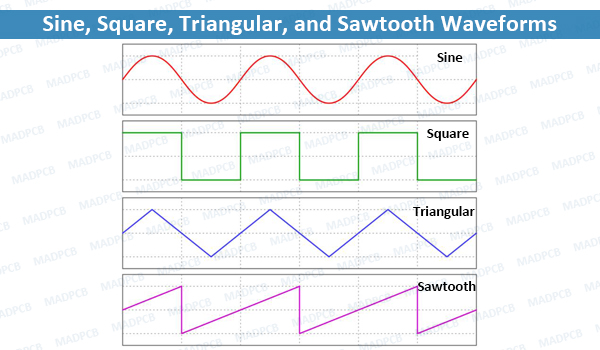What’s A Square Wave in PCB?
A Square Wave is defined as a non-sinusoidal periodic waveform in which the amplitude alternates at a steady frequency between minimum and maximum values, with the same duration at minimum and maximum. In an ideal square wave, the transitions between minimum and maximum are instantaneous. In printed circuit board (PCB) design, designers always sometimes square wave generator into the main board.
The square wave is a special case of a pulse wave which allows arbitrary durations at minimum and maximum amplitudes. The ratio of the high period to the total period of a pulse wave is called the duty cycle. A true square wave has a 50% duty cycle (equal high and low periods).
Square waves are often encountered in electronics and signal processing, particularly digital electronics and digital signal processing. Its stochastic counterpart is a two-state trajectory.
Square waves are universally encountered in digital switching circuits and are naturally generated by binary (two-level) logic devices. Square waves are typically generated by metal–oxide–semiconductor field-effect transistor (MOSFET) devices due to their rapid on–off electronic switching behavior, in contrast to BJT transistors which slowly generate signals more closely resembling sine waves rather than square waves.
Square waves are used as timing references or “clock signals“, because their fast transitions are suitable for triggering synchronous logic circuits at precisely determined intervals. However, as the frequency-domain graph shows, square waves contain a wide range of harmonics; these can generate electromagnetic radiation or pulses of current that interfere with other nearby circuits, causing noise or errors. To avoid this problem in very sensitive circuits such as precision analog-to-digital converters, sine waves are used instead of square waves as timing references.
In musical terms, they are often described as sounding hollow, and are therefore used as the basis for wind instrument sounds created using subtractive synthesis. Additionally, the distortion effect used on electric guitars clips the outermost regions of the waveform, causing it to increasingly resemble a square wave as more distortion is applied.

